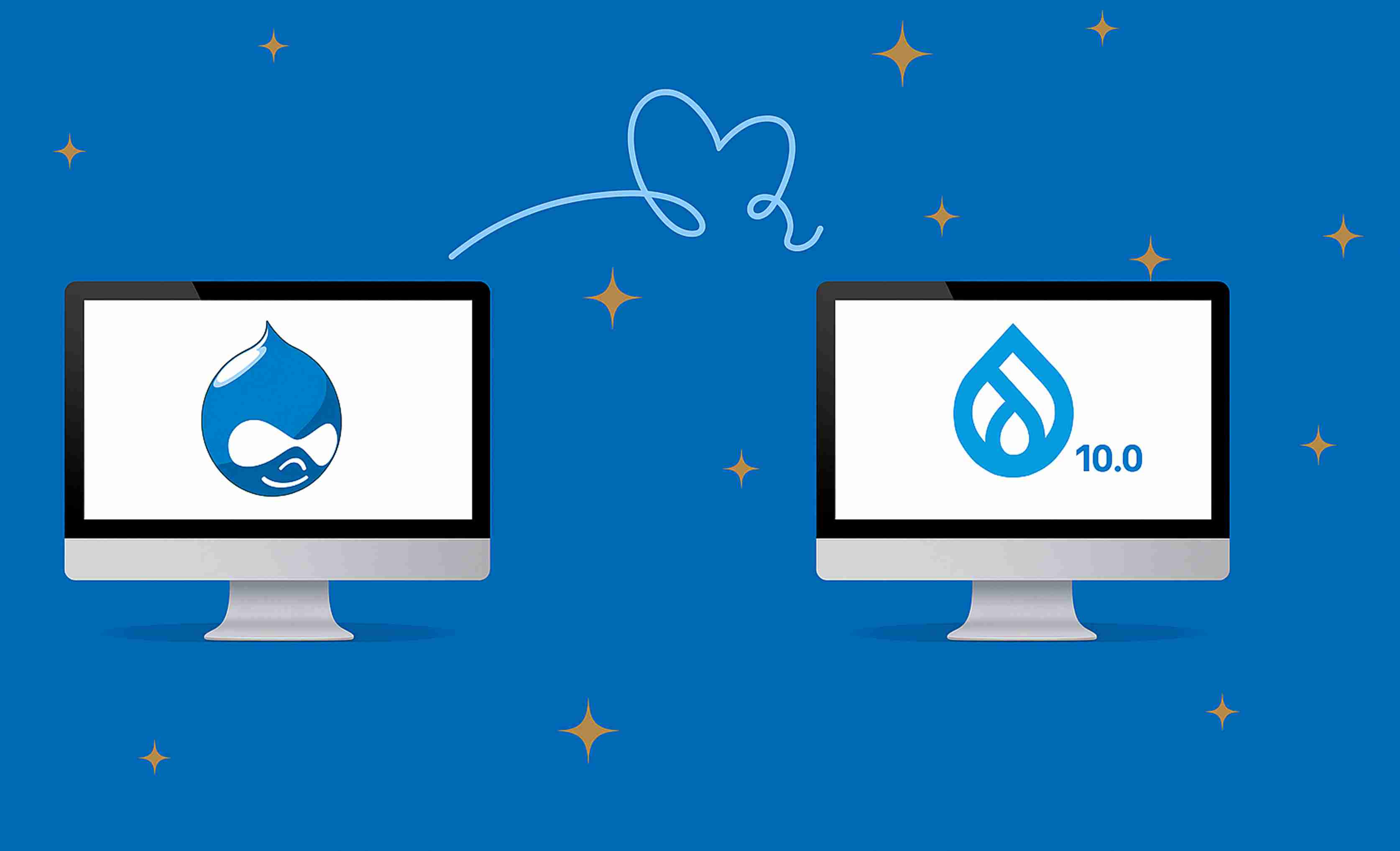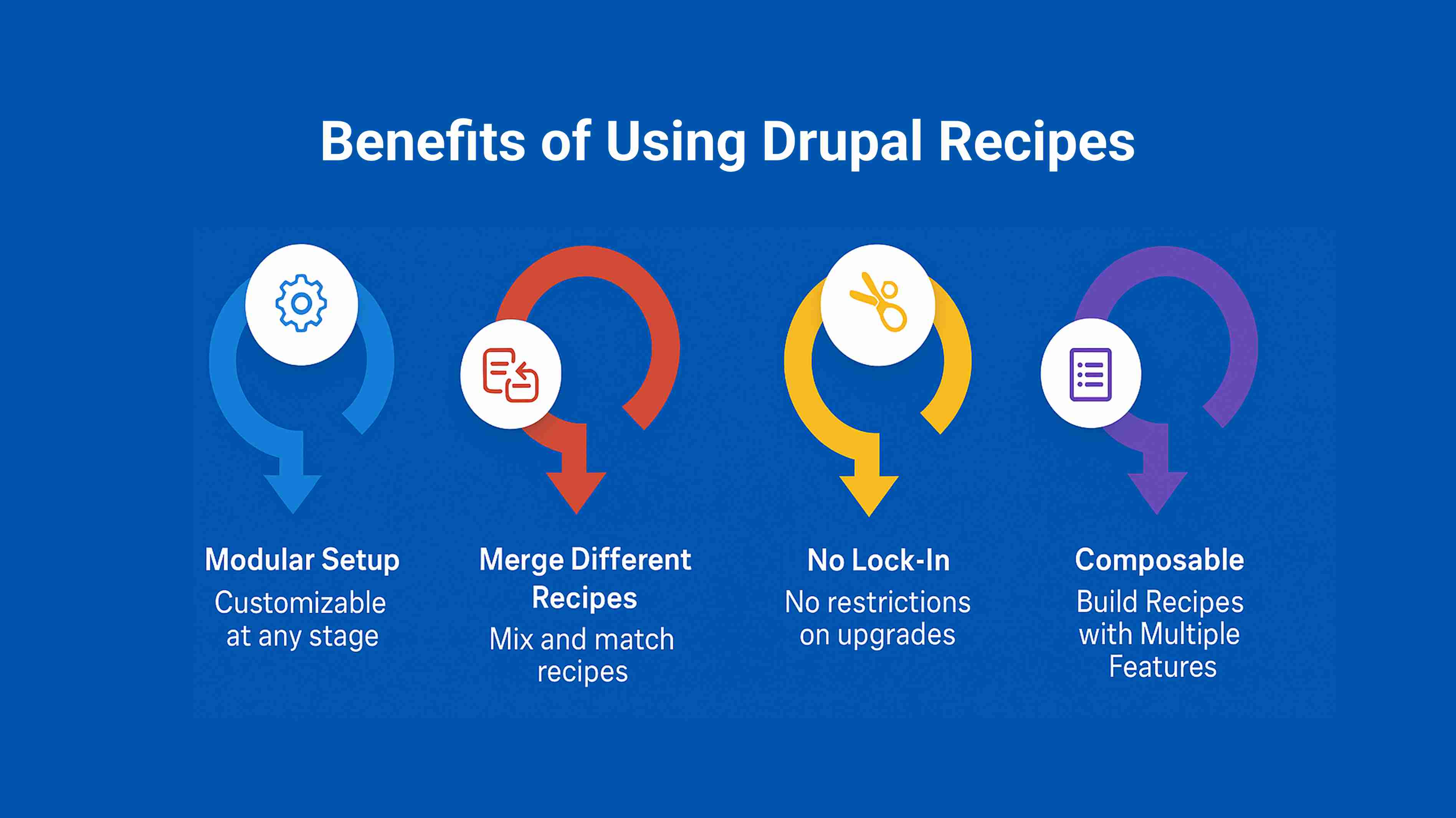Migrating to Drupal 10? Here’s How Recipes Can Save You Time

Still running your site on Drupal 7, 8, or 9? Then you already know—it’s time to move. Drupal 10 is not just the latest version—it’s the platform's future. With a modern codebase, updated dependencies (hello Symfony 6 and CKEditor 5), and long-term community support, it offers a robust foundation for forward-thinking digital experiences.
But here’s the challenge: migrating to Drupal 10 is no walk in the park, especially if your ecosystem spans multiple sites, brands, or departments. Whether you're an agency, higher ed institution, or enterprise organization, replicating site features over and over again can turn into a costly, time-consuming mess.
That’s precisely where Drupal Recipes can make all the difference.
The Migration Challenge

Migrating to Drupal 10 involves more than just hitting an “update” button. It often requires:
- Rebuilding content models
- Reapplying theme settings and customizations
- Reconfiguring modules, permissions, and roles
- Ensuring layout consistency
- Testing for regressions across UX and performance
And if you're managing a multisite architecture, these tasks multiply quickly. Imagine handling 20+ departmental sites for a university or 50 brand portals for a global franchise. Redoing everything for each site? That’s resource drain 101.
Without a systemized, repeatable process, migrations become bottlenecks. That’s where Drupal Recipes come in—to automate, standardize, and scale your deployment strategy.
Enter Drupal Recipes: What Are They?
Drupal Recipes are modular, reusable configurations that define sets of site features—like content types, views, modules, and permissions—all bundled into easy-to-deploy YAML files.
Think of Recipes like pre-built templates or feature packs you can apply during a new Drupal 10 build or migration.
A single Drupal Recipe might include:
- Predefined content types (e.g., Blog, Events, Staff Profiles)
- Views and blocks with filters, exposed search, and sorting
- Module configurations tailored to your business logic
- Themes and layout settings aligned with your brand guidelines
- User roles and permissions
- Ready-to-use menus, taxonomies, and workflows
You can manage these Recipes in version control, plug them into your CI/CD pipeline, and reuse them across environments. The Drupal Recipes module takes it a step further, giving site builders and DevOps teams a UI and API-driven way to deploy and manage Recipes with minimal friction.
Why Recipes Are a Game-Changer for Drupal 10 Migrations

Let’s be honest—every Drupal migration follows a pattern. You create the same content types, set up the same permissions, install the same modules, and recreate the same layout structures. Recipes help you stop reinventing the wheel.
Here’s why they matter:
- Standardize your setup across all sites
- Automate repetitive configuration tasks
- Reduce manual errors and setup fatigue
- Accelerate rollouts across multiple environments
- Ensure environment consistency—from dev to prod
Imagine you’re launching 30 microsites that all need a blog, an event calendar, and a contact form. Instead of configuring these for every site, you package those features into a Recipe, apply it once, and voilà—feature parity in minutes.
How to Use Drupal Recipes in Your Migration Workflow
Here’s a step-by-step roadmap to integrate Recipes into your Drupal 10 migration plan:
Step 1: Audit Existing Sites
Review your current Drupal 7/8/9 sites. Identify commonly used features, content types, and modules.
Step 2: Create Modular Recipes
Group reusable features into Recipes. For example:
- Blog Recipe: Content type + WYSIWYG + Tags + Views
- Event Calendar Recipe: Content type + Date modules + Views + Filters
- Press Release Recipe: Content type + Workflow + Permissions
Step 3: Use the Drupal Recipes Module
Install and configure the Drupal Recipes module. This lets you:
- Apply Recipes during install
- Reuse them across multisite setups
- Customize individual Recipes with overrides
Step 4: Automate with CI/CD
Integrate Recipes into your deployment pipeline using:
- GitHub Actions
- Acquia Cloud pipelines
- Platform.sh workflows
This ensures that every deployment is consistent, clean, and hands-free.
Step 5: Test, Tweak, Repeat
Recipes are modular—so test them, iterate, and refine. Update as needed without disrupting the entire build.
Conclusion
Drupal 10 brings speed, scalability, and a clean architectural slate—but without the right approach, your migration can drain time and resources.
Drupal Recipes simplify and supercharge the process. From automating site features to deploying consistent multisite builds, Recipes bring structure and speed to every Drupal migration project.
In an era where agility wins, Recipes are your secret weapon.
Ready to Migrate Smarter?
Book a Free Drupal 10 Migration Consultation
Let our Drupal experts audit your stack, map reusable features, and craft a tailored Drupal
Recipe migration plan for your organization.